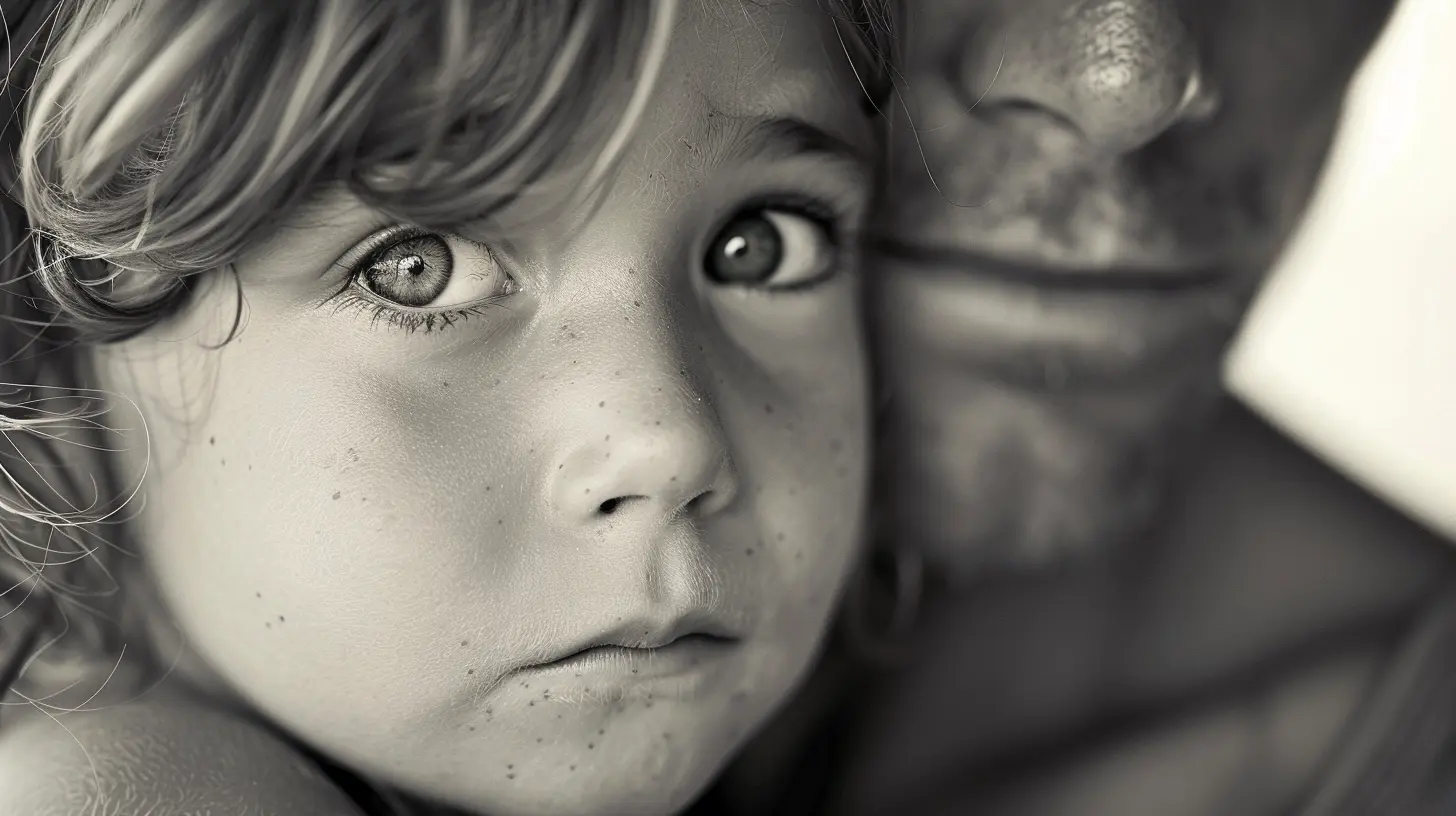The Value of Vulnerability: Teaching Empathy to Your Children
16 September 2025
Let’s just cut to the chase: Raising kind, emotionally intelligent kids in a world that sometimes feels colder than a freezer aisle is no joke. We want our children to grow up with brains, courage, and compassion—but where does that last one really start? You guessed it: vulnerability. Yep, that messy, raw, heart-on-your-sleeve stuff most of us adults still struggle with. But guess what? Vulnerability is the soul of empathy. It's what connects us as humans—and it’s the cornerstone of raising kids who actually give a damn about others.
So let’s dive in. It’s time to talk about why vulnerability should be something you model, not just something you mumble about. And trust me, by the end of this read, you’ll see how teaching empathy through vulnerability can shape your child into not just a good person—but a great one.
What Even Is Vulnerability, Really?
Before we can teach it, let’s break it down. Vulnerability isn’t weakness (don’t believe that outdated nonsense). It’s bravery. It’s the guts to say, “I don’t know,” “I messed up,” or “I feel really sad about this.” It’s letting your guard down even when the world tells you to keep your armor on at all times.And no, it’s not about oversharing or dumping your adult problems on your kids. Vulnerability, in parenting, is about being real. It’s admitting when you’re wrong. Talking about feelings. Listening without fixing. It's giving your child permission to feel—not just be “ok.”
The Link Between Vulnerability and Empathy
Let’s connect the dots.Empathy—being able to understand and feel what someone else is going through—doesn’t just happen. It’s not some magical switch that flips on when your kid hits double digits. It’s taught. Modeled. Lived.
If your child never sees you cry, how will they learn what sadness looks like? If you never talk about your mistakes, how will they learn forgiveness—or self-compassion? Vulnerability opens the door to these deep human experiences. Without it, empathy is just a buzzword.
➡️ TL;DR: Vulnerability is the gateway drug to empathy.
Why Hiding Your Emotions Hurts More Than It Helps
Parents, let’s be honest. How often have you said “I’m fine” when you were anything but?We’re told to keep it together. Be strong. Stay calm for the kids. And yes, consistency and security matter—but not at the cost of authenticity. Kids are emotional bloodhounds—they can sniff out B.S. even when they don’t have the vocabulary for it.
So when you pretend, they learn to pretend. When you hide your feelings, they feel confused or assume emotions are “bad.” And before you know it, you’ve taught them to bottle it up instead of speak it out.
That bottled-up stuff? It doesn’t disappear. It explodes—usually during homework time or teenage years.
Teaching Empathy: Start With Yourself
Here’s the truth bomb: You can read all the parenting books in the world, but if you’re not modeling empathy and vulnerability yourself, your kid’s not learning it.So start small.
- Admit when you’re wrong.
- Say “I’m sorry” with sincerity.
- Talk about your day—the good, the bad, and the frustrating.
- Use words like “I felt embarrassed” or “I was nervous.”
- Let them see you feel.
You don’t need to turn into a walking therapy session. But being real? That’s powerful.
Practical Ways to Teach Empathy Through Vulnerability
Alright, so how do we actually do this? How do we weave vulnerability into daily parenting without turning everything into an emotional TED talk?1. Name Emotions Out Loud
Feelings are like colors—kids need the vocabulary to identify them.Instead of just asking, “What’s wrong?” try:
- “Are you feeling frustrated because your tower fell?”
- “That must be disappointing. I’d probably feel the same.”
Model emotional language so your kids can follow.
2. Don’t Rush to Fix Everything
We get it—seeing your child in pain sucks. It’s almost instinctual to rescue them. But vulnerability thrives in the “staying with” not “fixing for.”Instead of leaping in with solutions, try:
- “That sounds like it was really hard. Want to talk more?”
- “I’m here with you. We don’t have to fix it right away.”
Let them sit in the uncomfortable for a minute. That’s where growth happens.
3. Share Your Own Stories
You don’t have to spill your deepest traumas. But sharing age-appropriate moments when you felt scared, nervous, or embarrassed helps normalize those feelings.Example:
- “I remember when I was your age and got left out at recess. It really hurt. I felt lonely.”
Now, your child knows they’re not alone.
4. Encourage Perspective-Taking
When conflicts arise—say, a sibling spat or a playground drama—help your child see both sides.- “What do you think your brother felt when you yelled at him?”
- “How would you feel if someone said that to you?”
Empathy grows when kids learn to pause and imagine someone else’s shoes.
5. Celebrate Courageous Conversations
If your child opens up or expresses tough emotions, don’t shut it down or rush past it. Celebrate it.Try:
- “I’m so proud of you for telling me that.”
- “That took a lot of courage, thank you for trusting me.”
Positive reinforcement works. Use it.
The Long Game: Why This Matters More Than Ever
Here’s the thing—empathy isn’t just “nice to have.” It’s a necessary life skill. In a world where emotional intelligence often trumps IQ in the workplace, relationships, and parenting, raising an empathetic kid is one of the best gifts you can offer the world.Think about it:
- Empathetic kids become better friends and partners.
- They’re less likely to bully—and more likely to stand up for others.
- They build resilience because they understand and process emotions rather than bury them.
And it starts with you.
Things That Will Surprise You (And Might Make You Cry)
Letting your child see you cry? It won’t shatter them—it will strengthen them. They’ll learn that emotions aren’t scary. That being human is messy and that’s okay.The first time your child says, “I know how that must feel,” you’ll want to frame it like a report card. Because that moment? That’s proof you’re raising someone who cares deeply.
And when they comfort a classmate, stand up for someone else, or come to you with a heart full of empathy—that’s when you’ll know it was all worth it.
Final Thoughts: Be Brave, Be Real
Parenting isn’t about perfection. It’s about presence. It’s about being brave enough to show your kids who you are—flaws, feelings, and all—and giving them permission to do the same.Vulnerability is the seed. Empathy is the garden. And you? You’re the gardener.
So water it. Nourish it. And watch your child blossom into someone who not only loves deeply but lives fully.
We need more humans in the world who feel. Who care. Who see others.
And it starts with parents who are bold enough to say, “Let me show you how.
all images in this post were generated using AI tools
Category:
FatherhoodAuthor:

Kelly Snow
Discussion
rate this article
1 comments
April Rogers
This article beautifully highlights how embracing vulnerability can nurture empathy in children. By modeling emotional openness, parents not only foster stronger connections but also equip their kids with essential social skills for navigating life's complexities.
September 21, 2025 at 4:48 PM

Kelly Snow
Thank you for your thoughtful comment! I'm glad you found the article resonates with the importance of vulnerability in fostering empathy in children. Your insights on modeling emotional openness are spot on!


